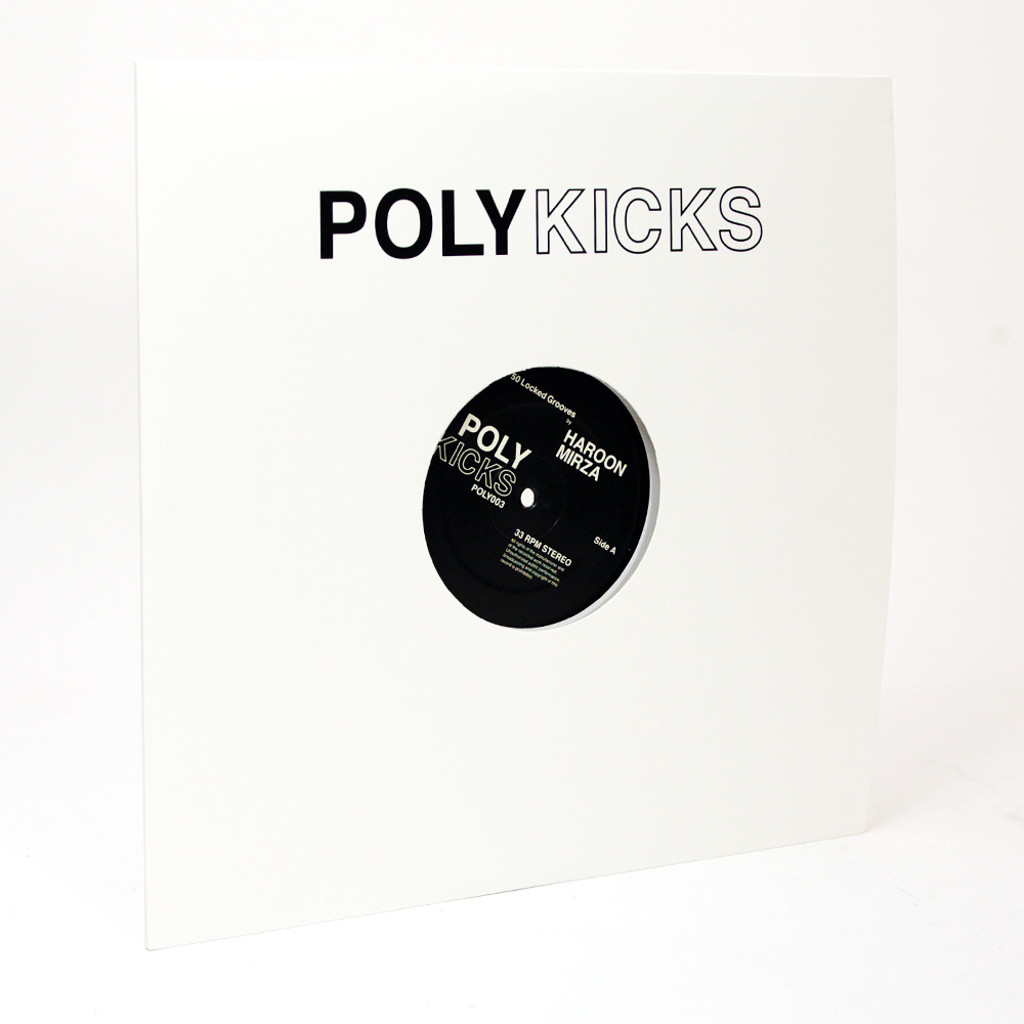Haroon Mirza

50 Locked Grooves
In January 2016, the UK techno label Poly Kicks released 50 Locked Grooves featuring tracks made by Haroon Mirza using his own custom 12″s created from glass, cardboard, sellotape and other household items. The double pack, which contained two identical 12″s, is comprised of the recorded and processed versions of Mirza’s loops, and according to the label are “designed to be played together.”
For Continuous Drift / An Introduction to Work and Energy, the 50 locked grooves from the Poly Kicks release are reassembled every time the work is triggered in Meeting House Square. A randomly-chosen locked groove is assigned to each of the four speaker locations. Because the grooves are each 1.8 seconds long (the time it takes for a single revolution of a vinyl LP playing at the standard 33 1/3 RPM), these four-groove assemblages pursue a relentlessly stable syncopation. After a minute of playback, a new set of grooves is introduced, forcing a quadrophonic transition that can be explored by moving through the square. The gesture fades to silence within another 60 seconds.
Haroon Mirza has won international acclaim for installations that test the interplay and friction between sound and light waves and electric current. He devises kinetic sculptures, performances and immersive installations, such as The National Apavillion of Then and Now (2011) – an anechoic chamber with a circle of light that grows brighter in response to increasing drone, and completely dark when there is silence. An advocate of interference (in the sense of electro-acoustic or radio disruption), he creates situations that purposefully cross wires. He describes his role as a composer, manipulating electricity, a live, invisible and volatile phenomenon, to make it dance to a different tune and calling on instruments as varied as household electronics, vinyl and turntables, LEDs, furniture, video footage and existing artworks to behave differently. Processes are left exposed and sounds occupy space in an unruly way, testing codes of conduct and charging the atmosphere. Mirza asks us to reconsider the perceptual distinctions between noise, sound and music, and draws into question the categorisation of cultural forms. “All music is organised sound or organised noise,” he says. “So as long as you’re organising acoustic material, it’s just the perception and the context that defines it as music or noise or sound or just a nuisance” (2013).